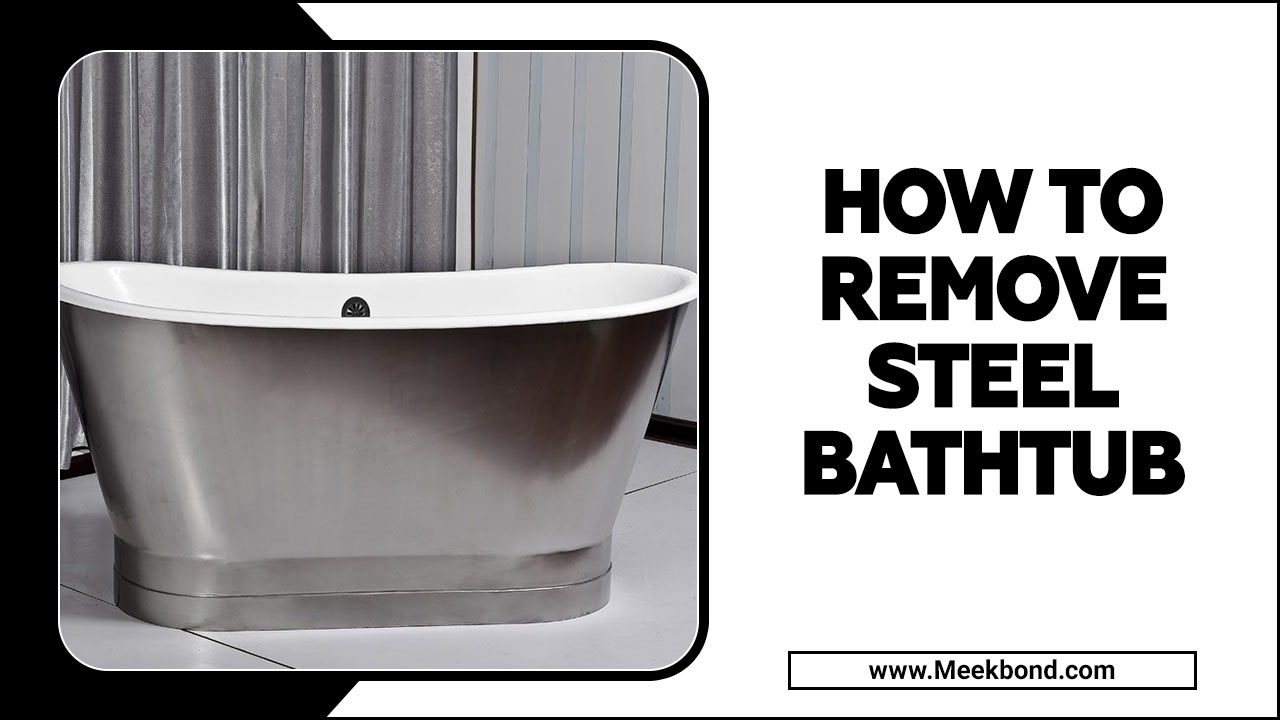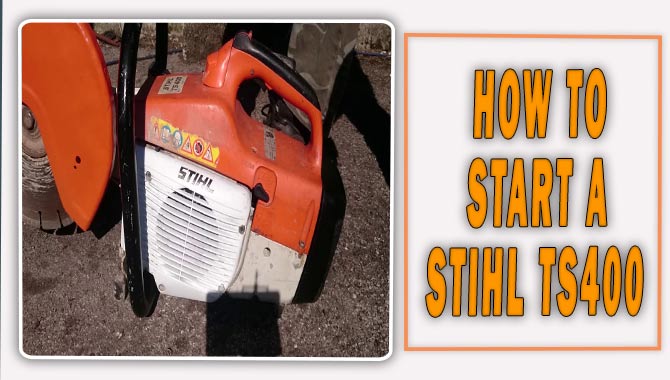Floor outlet covers are essential to any electrical system, providing a safe and convenient way to access power in areas where wall outlets are impractical.
However, with their low profile design and unique opening mechanism, many people struggle to open them when needed. This can be especially frustrating for those undergoing a home renovation or trying to fix a wiring issue.
Here, we will guide you through the process of opening floor outlet covers with ease. Whether you are a DIY enthusiast or a homeowner looking to make simple electrical repairs, understanding how to open these covers properly is a valuable skill. We will cover the different types of floor outlet covers, common reasons for opening them, and step-by-step instructions on how to open floor outlet covers.
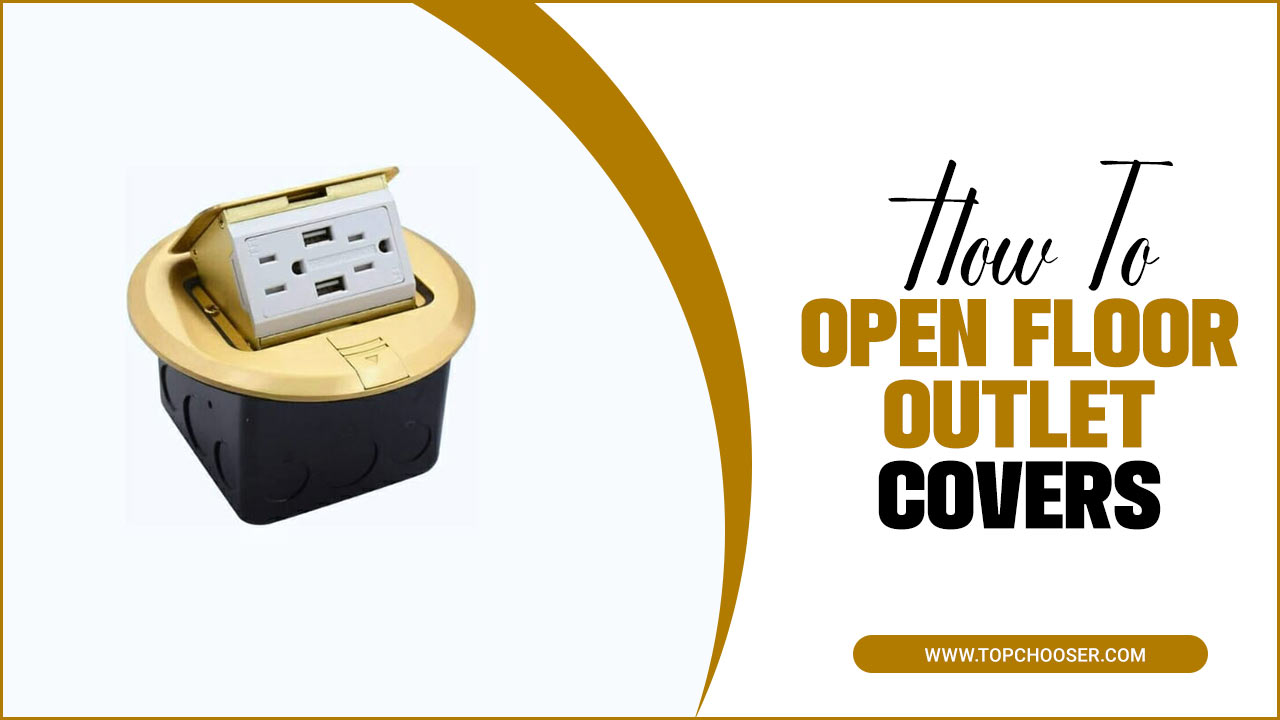
9 Steps On How To Open Floor Outlet Covers
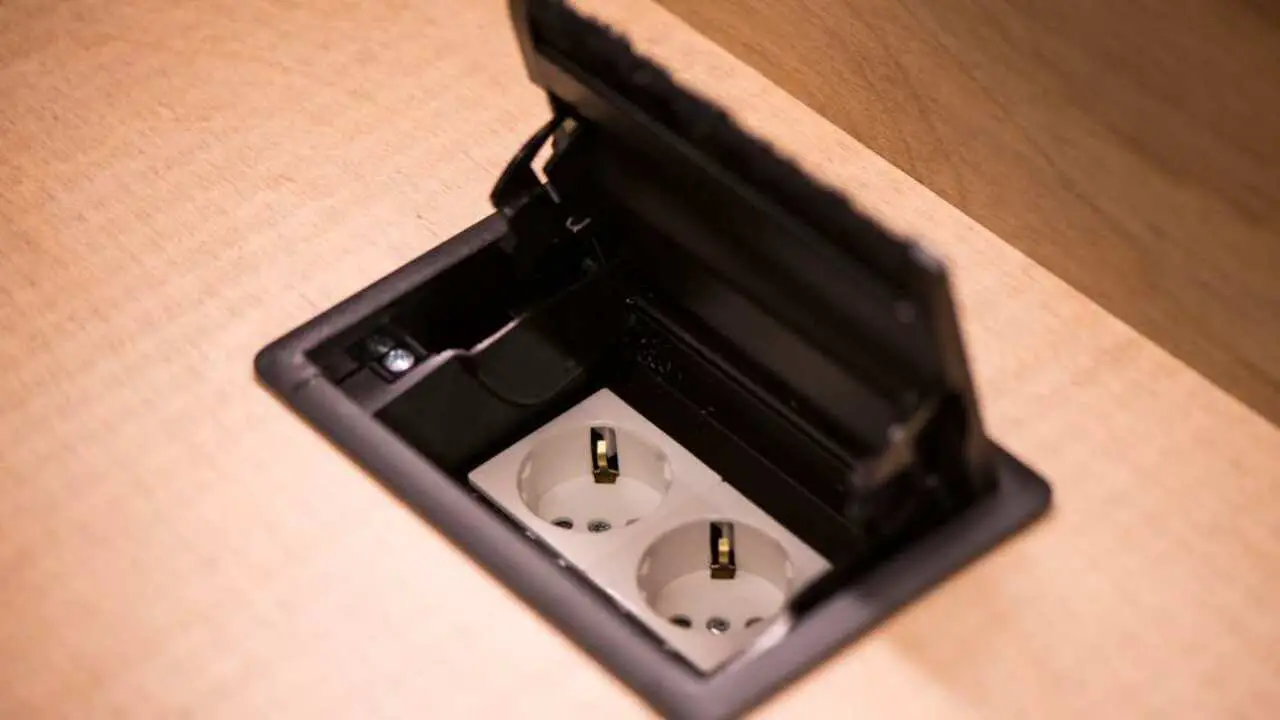
One often overlooked aspect of home safety and design is the importance of floor outlet covers. These covers play a crucial role in ensuring the safety of residents, especially those with young children or pets.
The primary purpose of floor outlet covers is to protect individuals from the potential hazards of exposed electrical outlets. By securely covering the outlet, these covers prevent accidental contact with live wires, reducing the risk of electrical shocks or fires. Here are 9 Steps For how to open floor outlet covers:
Step 1: Identify The Type Of Floor Outlet Cover You Have
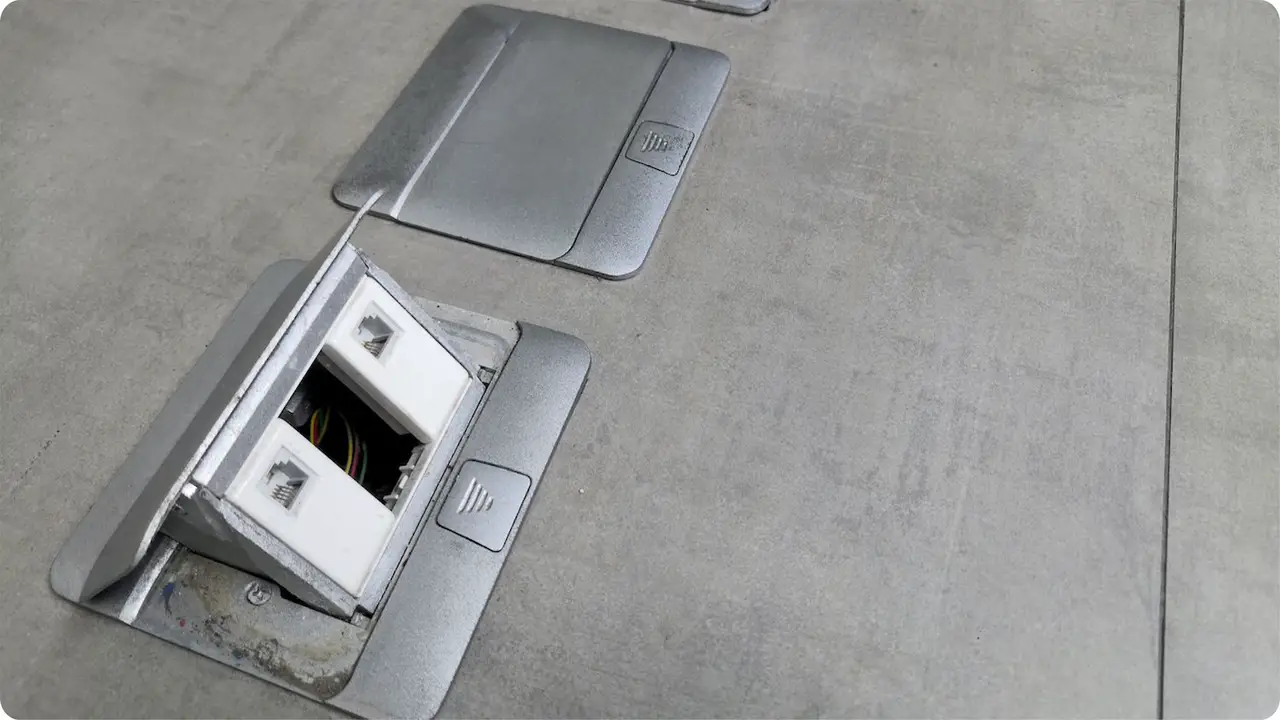
When opening floor outlet covers, the first step is to identify the type of cover you have. Several floor outlet covers include screw-on, snap-on, and hinged. Each type requires a slightly different approach to removal. Screw-on covers typically require a screwdriver to loosen and remove the screws holding the cover in place.
You can remove snap-on covers by gently prying them up with a flathead screwdriver or your fingers. You often need to press or flip a small latch or release button to open hinged covers. By identifying the type of floor outlet cover you have, you can ensure that you use the correct method for opening it safely and efficiently.
Step 2: Gather The Necessary Tools And Equipment
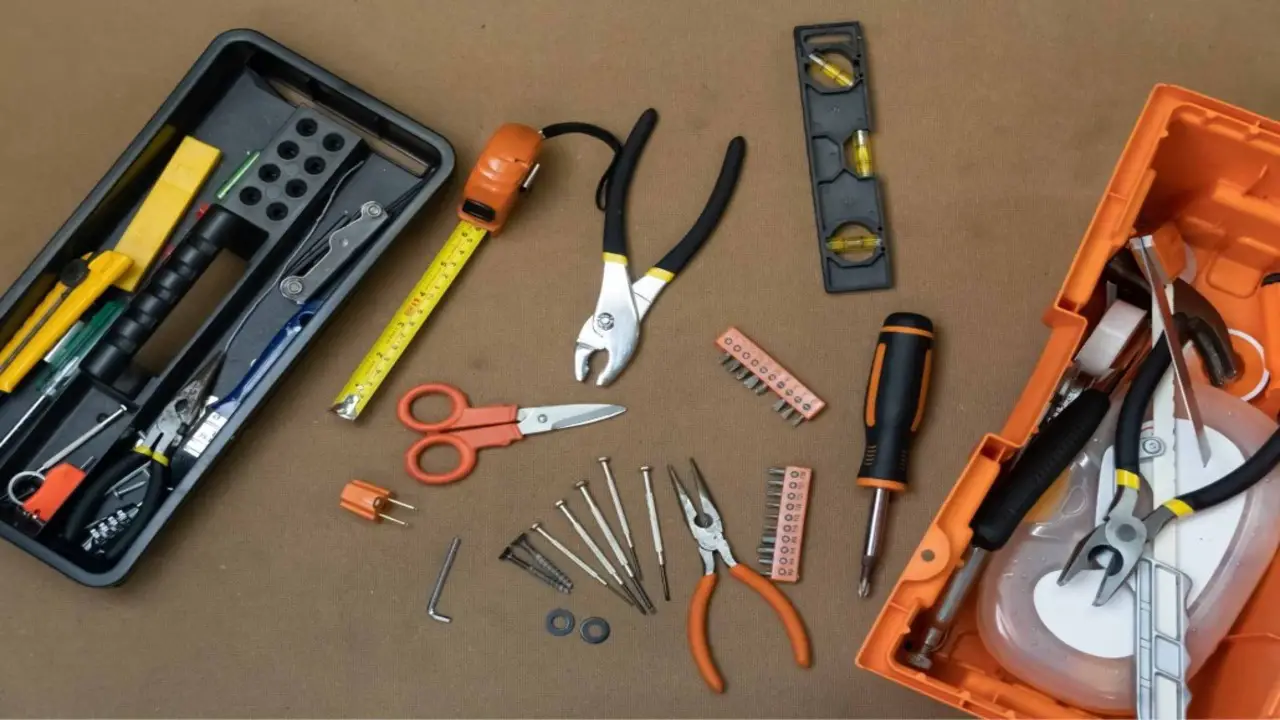
Before opening floor outlet covers, gathering all the necessary tools and equipment is important. This will ensure you have everything you need to complete the task efficiently and effectively. Make sure you have a screwdriver, preferably a Phillips-head screwdriver, as most outlet covers secure with screws.
If you don’t have a screwdriver, you can also use a drill with a screwdriver bit. This is crucial for your safety and to avoid any accidents. Additionally, it is advisable to have a pair of pliers handy. These will come in handy if you encounter any tight screws or need to manipulate wires during the installation process.
Step 3: Locate The Floor Outlet Cover
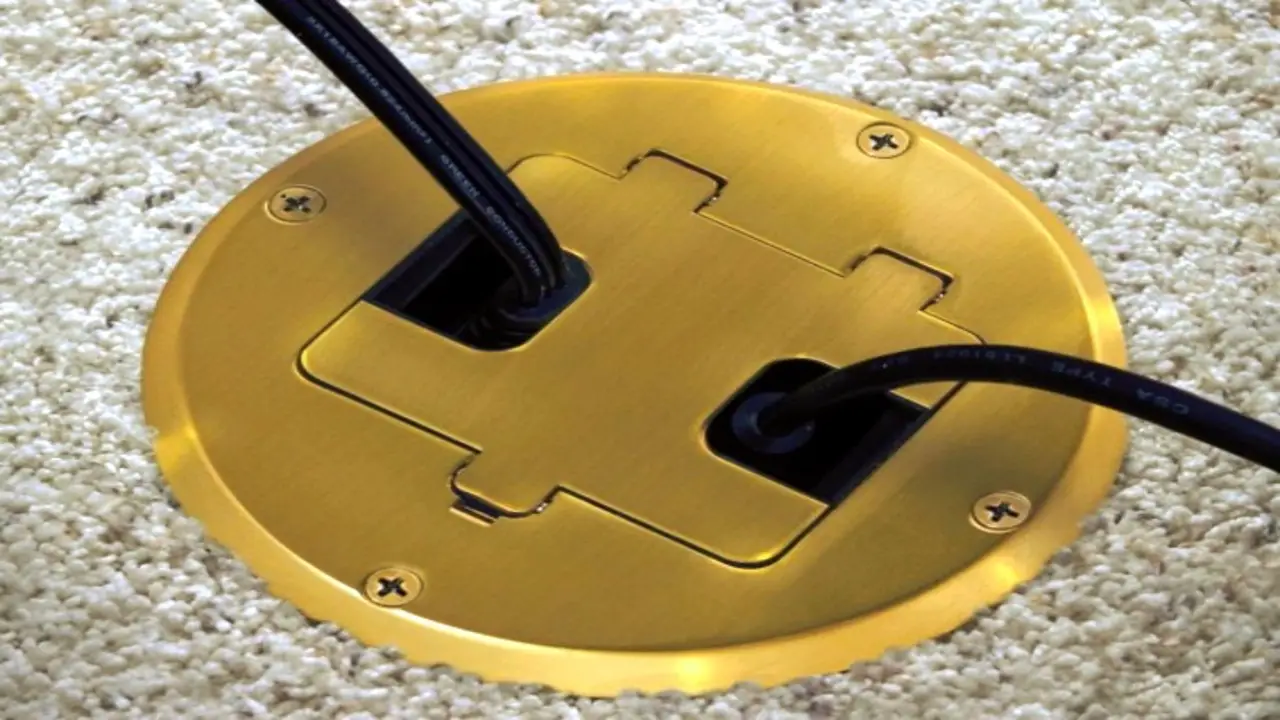
Begin by surveying where you suspect the floor outlet cover is. Look for any indications, such as small openings or grooves in the flooring, that might suggest the presence of a hidden outlet. Pay close attention to corners and edges of the room, as electricians often install floor outlets in these common areas.
If you are unsure about the exact location, you can use a stud finder or an electronic circuit tracer to help you identify the position of the outlet cover. These tools can detect the presence of electrical current flowing through the wires beneath the floor, leading you to the right spot. Once you have identified the general area, carefully inspect the flooring surface for any subtle differences or irregularities that might indicate the presence of the cover.
Step 4: Remove Any Obstructions
Before attempting to open floor outlet covers, removing any obstructions blocking access to the cover is important. This can include furniture, rugs, or other objects covering the outlet. Removing these obstructions can ensure a clear path to the cover and prevent potential accidents or damage.
Once the area is clear, you can open the floor outlet cover according to the specific instructions for your particular model. Remember always to exercise caution and follow proper safety glasses procedures when working with electrical outlets.
Step 5: Use A Flathead Screwdriver To Pry Open The Cover

Opening floor outlet covers can be a bit tricky, but with the right tools and technique, it can be done easily. Step 5 in the process involves using a flathead screwdriver to pry open the cover. Start by inserting the tip of the screwdriver into one of the small slots or notches on the cover.
Apply gentle pressure and slowly work your way around the cover, gently prying it open. Be careful not to apply too much force, as this can damage the cover or surrounding flooring. Once you have loosened all sides of the cover, it should easily lift off, revealing the outlet beneath. Following these steps will help you successfully open floor outlet covers without any hassle.
Step 6: Apply Pressure To Lift The Cover
To open floor outlet covers, remove any screws or fasteners that may be securing the cover in place. Once the cover is free from attachments, you can use a flathead screwdriver or a similar tool to apply pressure and lift the cover.
Insert the tool’s edge into the small gap between the cover and the outlet box and gently pry upward. Be careful not to use excessive force, which could damage the cover or the surrounding flooring. With a steady and controlled motion, continue applying pressure until the cover lifts off completely.
Once you remove the cover, you can access the outlets for maintenance or repairs. Remember to exercise caution when working with electrical components and always turn off the power before handling any outlets or wiring.
Step 7: Remove The Screws Holding The Cover In Place
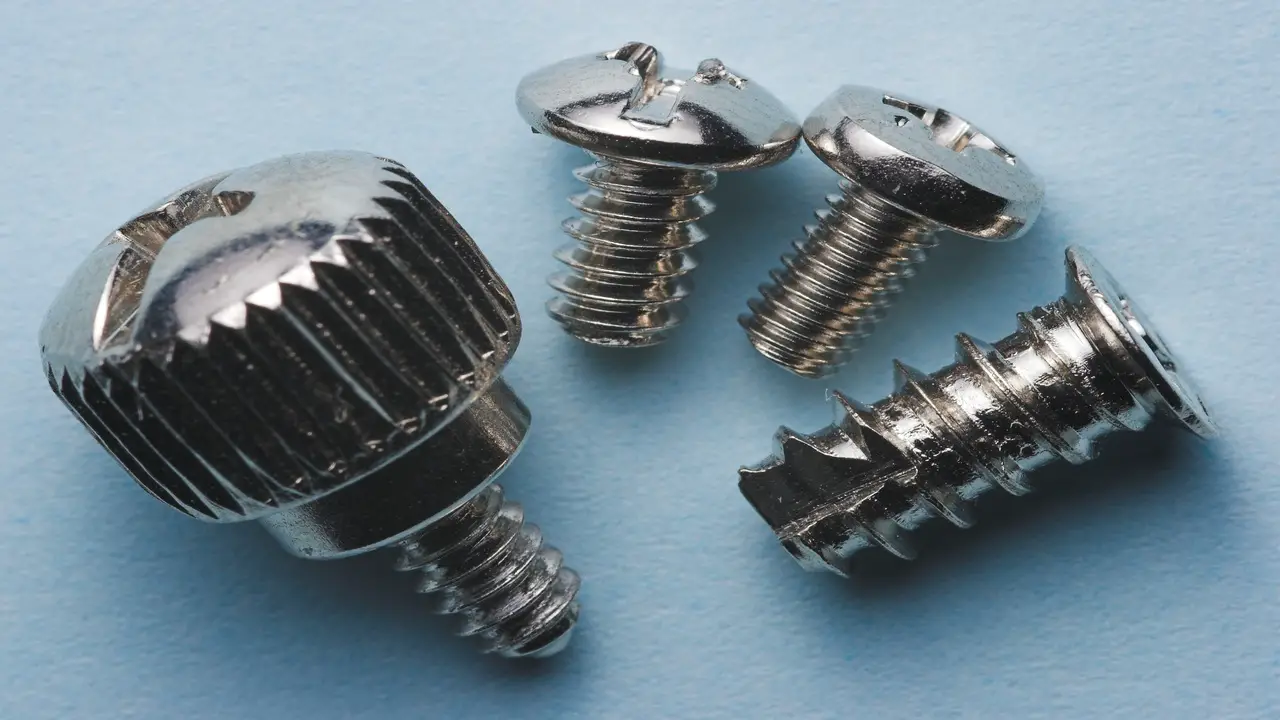
Opening floor outlet covers is a relatively simple process. Locate the screws holding the cover in place. In most cases, there will be one or two screws that need to be removed. Use a screwdriver that matches the size of the screws and carefully unscrews them counterclockwise.
Once the screws are removed, you should be able to lift the cover off and access the outlets underneath. It’s important to exercise caution when working with electrical outlets, so if you’re unsure or uncomfortable with the process, it’s always best to consult a professional electrician for assistance.
Step 8: Lift The Cover Out Of The Outlet Box
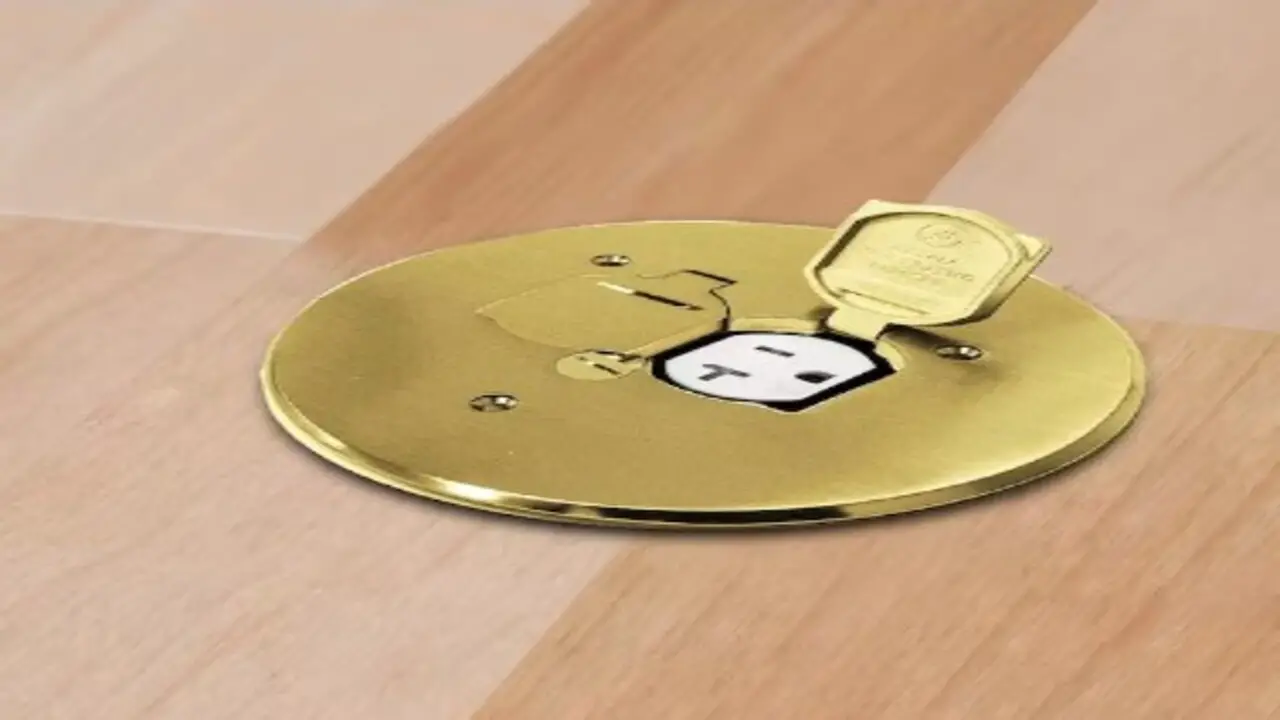
To begin, you will need to lift the cover out of the outlet box. Start by using a flathead screwdriver or a small pry tool to pry up one corner of the cover gently. Once one corner is lifted, continue prying along the edges of the cover until it is completely free from the outlet box.
Be careful not to use too much force, as this can damage the cover or the outlet itself. Once the cover is removed, you can access the outlets and make any necessary adjustments or repairs.
Step 9: Replace The Cover And Secure It In Place
Once you have completed any necessary repairs or adjustments to the electrical outlet, it is time to replace and secure the cover. Begin by aligning the cover with the outlet and ensuring it fits properly. Then, using a screwdriver, reinsert the terminal screw into the holes on the cover and tighten them until they are snug.
Be careful not to over-tighten the screws, as this can cause damage to the cover or the outlet itself. Tug the cover to ensure it is firmly attached once it is securely in place. If it moves or feels loose, double-check and tighten all screws correctly. And there you have it – your floor outlet cover is now back in place and ready for use.
Why Do You Need To Open Floor Outlet Covers?
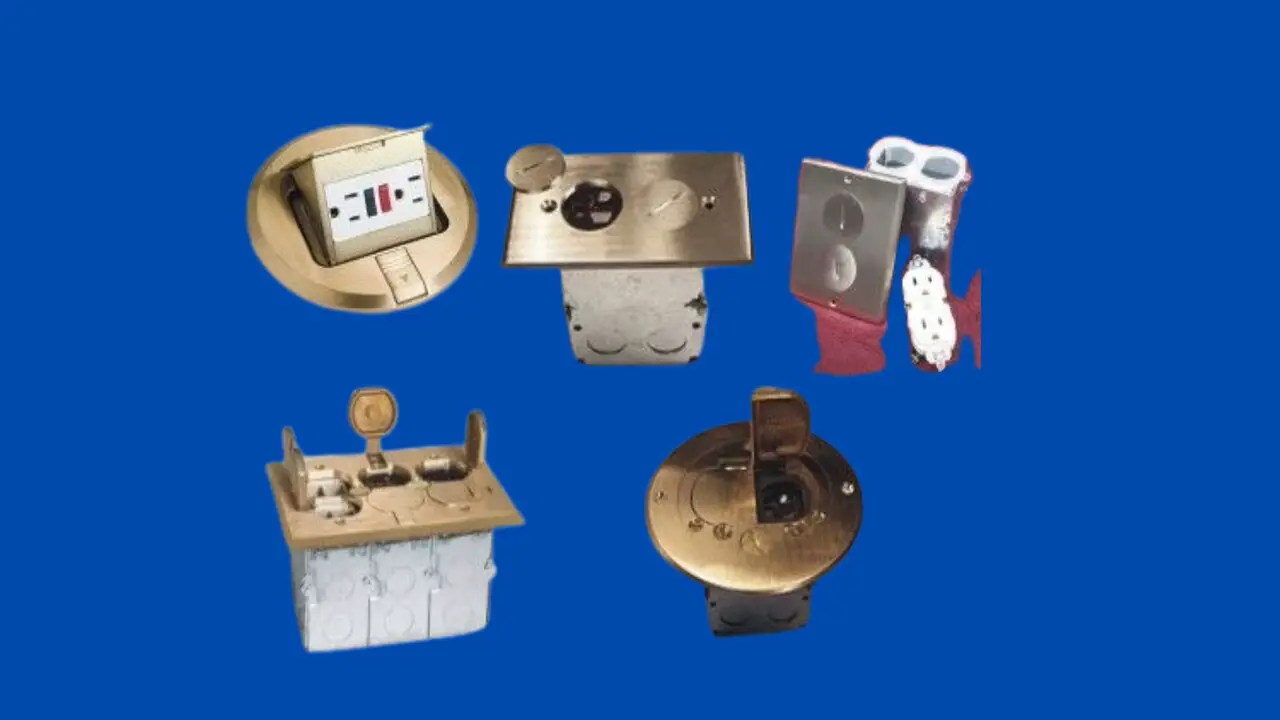
You need to open the floor outlet covers for several reasons. Accessing the electrical outlets hidden beneath the cover may be necessary to plug in or unplug devices. Limited wall outlets are particularly important in areas with limited wall outlets.
Additionally, opening floor outlet covers allows for maintenance and repairs on the electrical wiring or outlets if needed. It also allows inspecting the outlets for any signs of damage or wear. Overall, opening floor outlet covers are essential for ensuring proper functionality and safety of the electrical system in a building.
Different Types Of Floor Outlet Covers And How They Secure
Different floor outlet covers serve various purposes, such as providing access to power outlets installed on the floor or concealing them when not used. We secure them to ensure safety and prevent accidental access to electrical components. Here are some common types of floor outlet covers and how they secure:
- Screw-On Covers: These covers typically have screw holes around the perimeter. Using screws to fasten them to the floor outlet box secures them. This ensures a tight and secure fit.
- Spring-Loaded Covers: These covers are designed with a spring mechanism that allows them to open and close easily. The spring tension secures them and keeps them in place when closed. When accessing the outlet, you press down on the cover, and it pops open. Once you release it, the spring mechanism closes it securely.
- Flip-Open Covers: These hinged covers allow them to flip open and close. The hinge mechanism secures them, keeping them closed when not in use. To access the outlet, flip the cover open, which will stay in place until you close it.
- Locking Covers: Some floor outlet covers have locking mechanisms for added security. These covers require a key or a specific tool to unlock and open them. The locking mechanism secures them, preventing unauthorized access to the electrical components.
Safety Precautions To Keep In Mind While Opening Floor Outlet Covers
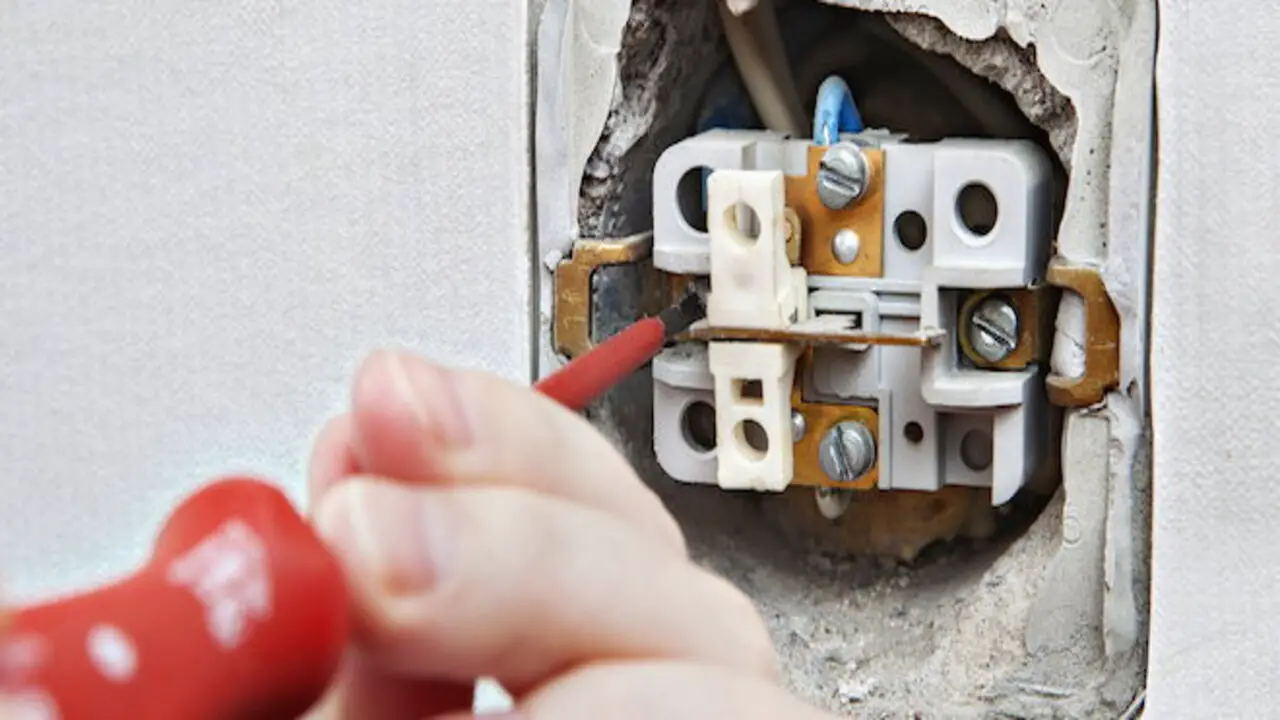
Open floor outlet covers are an essential component of any modern electrical system. These covers have specific designs to provide a safe and aesthetically pleasing solution for concealing outlets installed on the floor. With their sleek and minimalistic design, open floor outlet covers seamlessly blend into the surrounding flooring, creating a clean, unobtrusive look. When opening floor outlet covers, there are several safety precautions to keep in mind:
- Ensure The Power Is Turned Off: Before attempting to open a floor outlet cover, it is crucial to turn off the power to the outlet. Locate the circuit breaker or fuse box and turn off the corresponding circuit to prevent the risk of electric shock.
- Use Appropriate Tools: Use a screwdriver or other suitable tool to remove the screws holding the outlet cover in place. Avoid using tools made of conductive materials like metal, as they can increase the risk of electric shock.
- Wear Protective Gear: It is recommended to wear rubber gloves and safety goggles while working with electrical outlets. This protective gear helps to protect against potential electrical hazards.
- Inspect For Any Damage: Before opening the floor outlet cover, visually inspect it for any signs of damage, such as cracks, exposed wires, or burnt areas. If you notice any damage, do not proceed and contact a qualified electrician for assistance.
- Proceed With Caution: Once you have ensured the power is off, carefully remove the screws holding the outlet cover in place. Avoid exerting excessive force or prying, as this can cause damage to the outlet or surrounding flooring.
- Check For Loose Wires: After removing the outlet cover, inspect for any loose or disconnected wires. If you find any, we recommend contacting a licensed electrician to reconnect them properly.
Common Problems And Troubleshooting Tips When Opening Floor Outlet Covers
Open floor outlet covers are essential to any modern building or renovation project. Designed to provide a safe and convenient solution for accessing electrical outlets installed on the floor, these covers offer a seamless integration with the surrounding flooring material. Common problems and troubleshooting tips when opening floor outlet covers:
- Difficulty Opening: If you’re having trouble opening the floor outlet cover, it could be due to dirt or debris accumulation. Use a small brush or toothbrush to gently clean around the edges of the cover to remove any obstructions. Applying a small amount of lubricant can also help loosen the cover.
- Stuck or Jammed Cover: Sometimes, floor outlet covers can get stuck or jammed, making it difficult to open. In such cases, try using a flathead screwdriver or thin object to pry the cover carefully. Be cautious not to apply excessive force to avoid damaging the cover or the outlet.
- Loose or Wobbly Cover: If the floor outlet cover feels loose or wobbly when opened, it may be due to loose screws or an improper installation. Check if the screws holding the cover in place tighten securely. If they are loose, tighten them using a screwdriver. If the cover is unstable, contact a professional electrician to ensure proper installation.
- Electrical Issues: If you experience sparks or electrical malfunctions when opening the floor outlet cover, it’s important to exercise caution. Please turn off the power supply to the outlet from the breaker box and avoid using it until the issue is resolved. In such cases, it’s best to contact a licensed electrician to inspect and repair any electrical problems.
How To Clean And Maintain Floor Outlet Covers After Opening Them
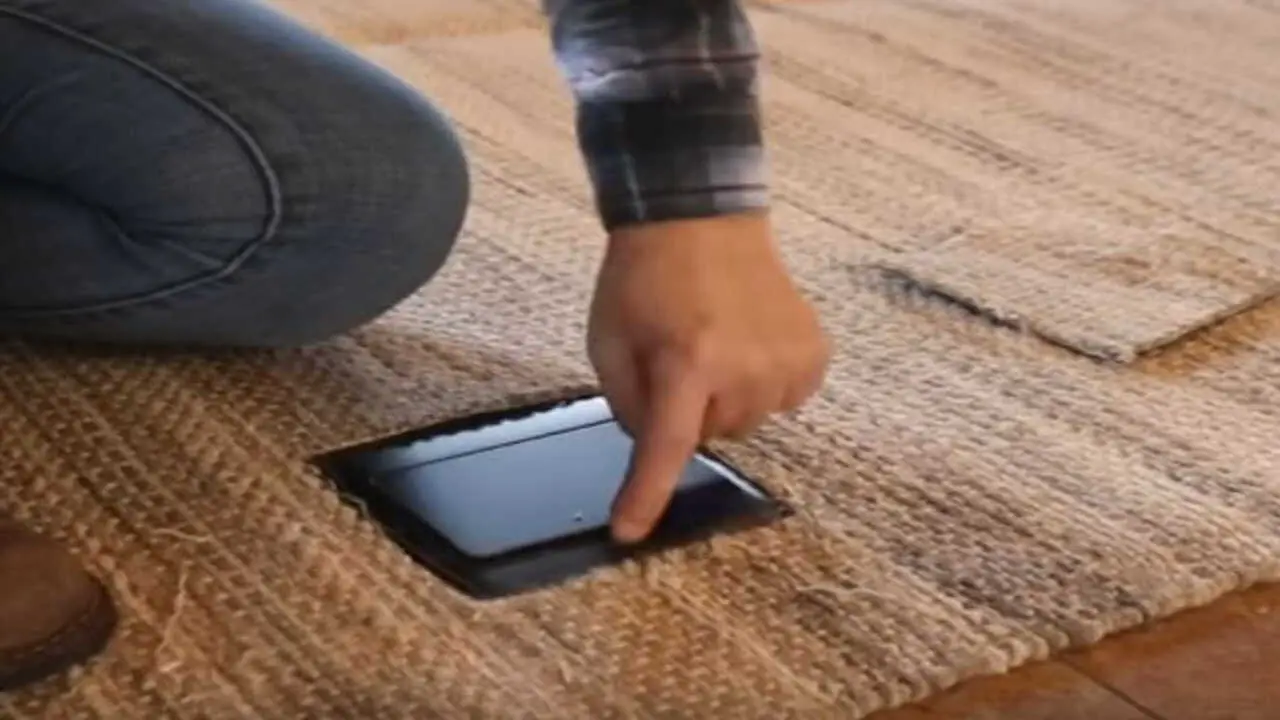
One of the key advantages of open floor outlet covers is their ability to blend in seamlessly with the design and aesthetic of the space. Unlike traditional outlet covers mounted on walls or baseboards, open floor outlet covers lie flush with the floor, resulting in a clean and unobtrusive appearance. To clean and maintain floor outlet covers after opening them, follow these steps:
- Gather The Necessary Tools: You will need a soft cloth or sponge, mild soap or cleaning solution, warm water, and a screwdriver.
- Turn Off The Power: Before starting any cleaning or maintenance work on floor outlet covers, ensure that the power to the outlets is turned off. This is crucial for your safety.
- Remove The Cover: Use a screwdriver to unscrew the screws holding the cover in place carefully. Keep the screws in a safe place to avoid losing them.
- Clean The Cover: Take a soft cloth or sponge and dampen it with warm water, mild soap, or a gentle cleaning solution. Gently wipe the cover, removing any dirt, dust, or stains. Avoid using harsh chemicals or abrasive materials that could damage the cover.
- Dry The Cover: After cleaning, use a clean, dry cloth to thoroughly dry the cover before reattaching it. Moisture can cause damage or corrosion, so ensure the cover is completely dry.
- Inspect The Outlets: While the cover is off, inspect the outlets for any signs of damage, loose wires, or debris. If you notice any issues, it is best to contact a qualified electrician to address the problem.
- Reattach The Cover: Once the cover and outlets are clean and dry, carefully align the screw holes on the cover with the corresponding holes on the outlet.
Conclusion
Opening floor outlet covers may seem daunting, but it can be done easily and safely with the right steps. Following the step-by-step guide on how to open floor outlet covers, you can open them without hassle. Remember to take your time and proceed with caution to prevent damage or injury.
With these simple instructions, your floor outlet covers will be opened quickly, allowing you to access and make any necessary adjustments to your electrical outlets. Don’t let the fear of opening floor outlet covers hold you back – empower yourself with the knowledge and confidence to tackle this task successfully.
Frequently Asked Questions
[rank_math_rich_snippet id=”s-61f09cc1-f93b-4646-97f6-1eb427c47796″]

I am passionate about home engineering. I specialize in designing, installing, and maintaining heating, ventilation, and air conditioning systems. My goal is to help people stay comfortable in their homes all year long.


